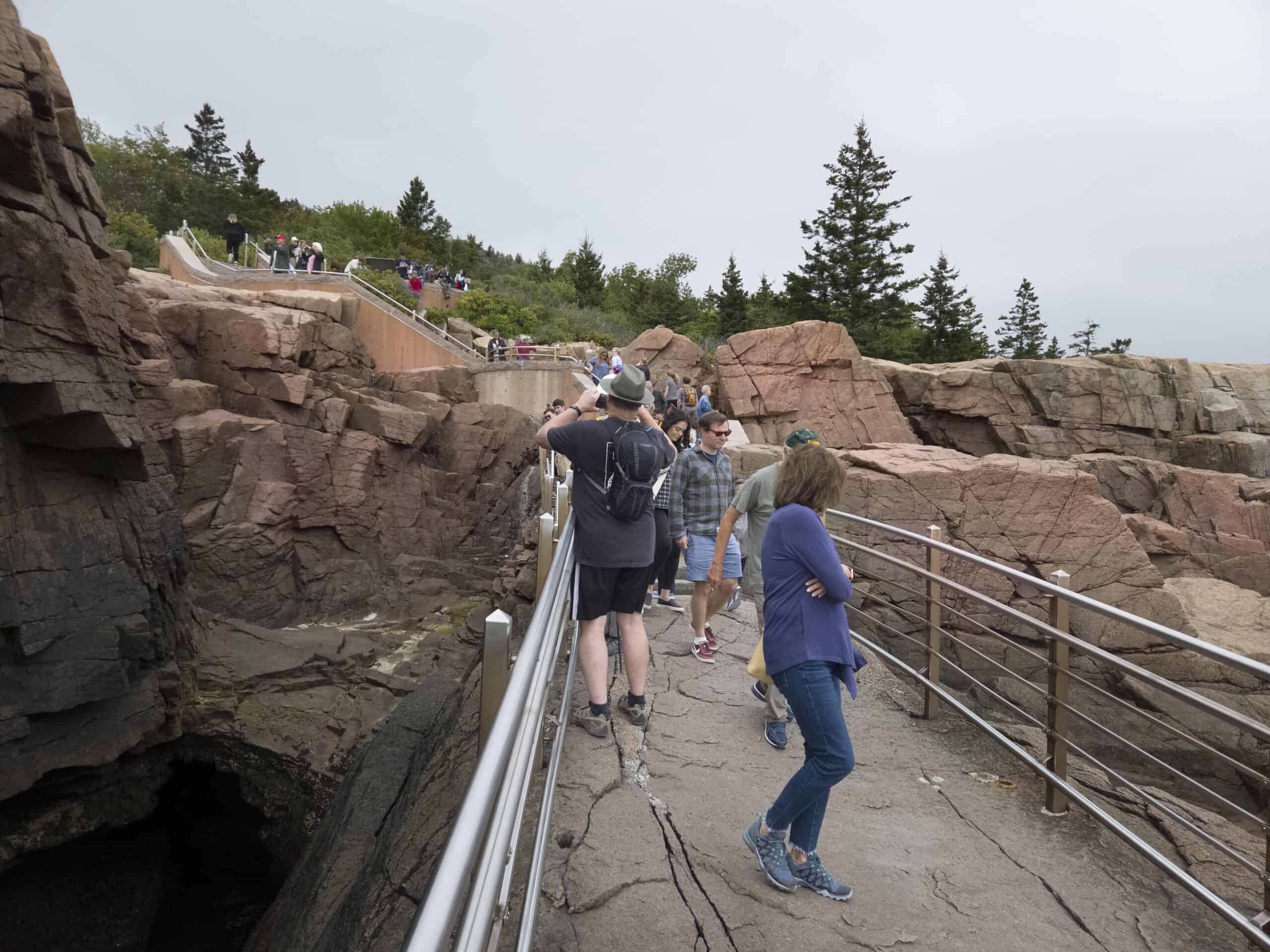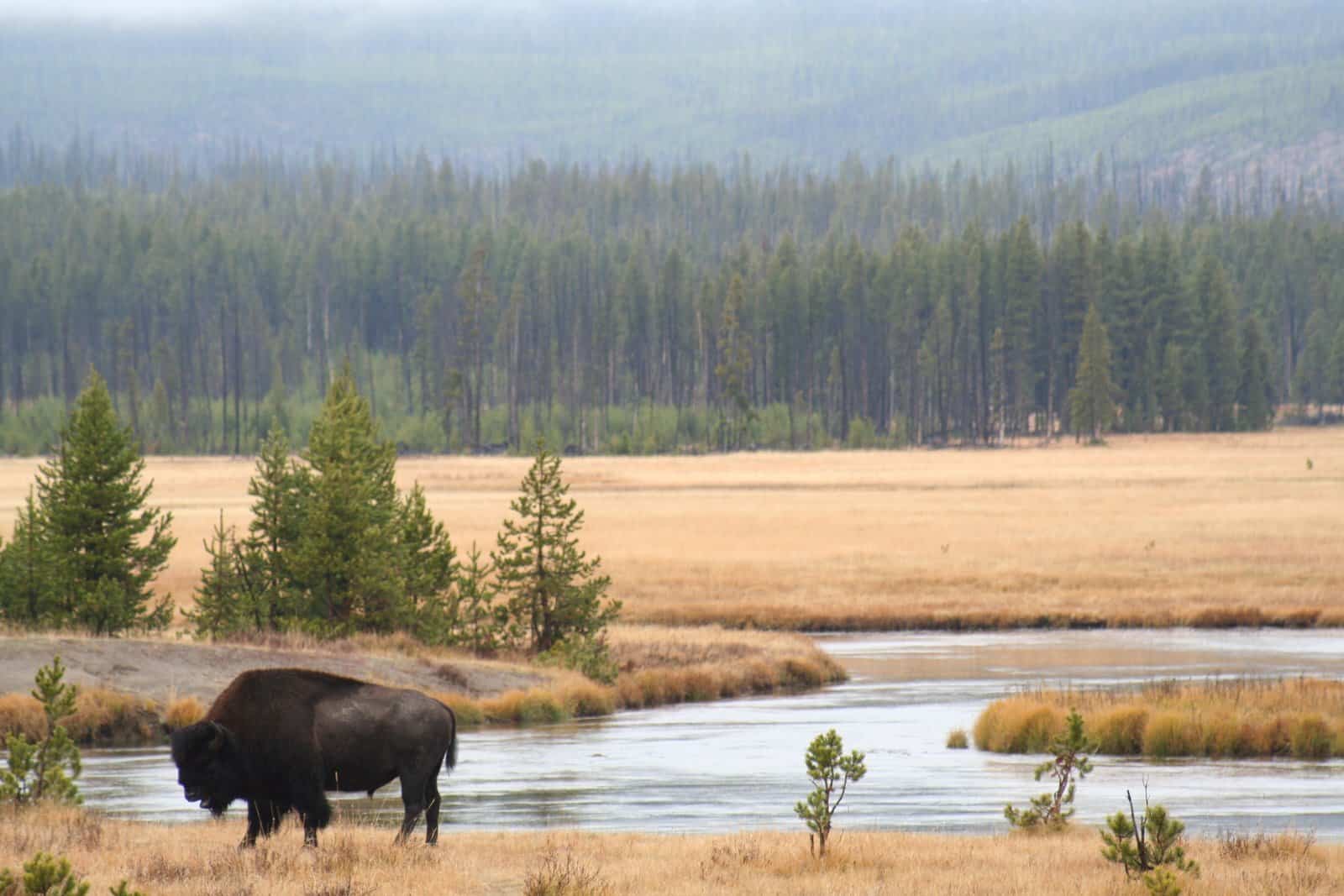Share this article
Improvements to fladry
At the edge of a field, a wolf stops to study movement in the distance. Bright red flags blow gently in the breeze, just enough to make the nearby fence look like it is quivering. Inside the fence, 30 pregnant ewes continue to graze while unaware of the danger. Luckily, for this flock, the wolf passes it by.
As producers learn more about fladry, National Wildlife Research Center (NWRC) researcher Dr. Julie Young hopes such a scenario becomes more common in areas where wolves (or coyotes) and sheep coexist. Fladry, a simple tool used to deter predation, consists of a line of brightly-colored flags hung along the pasture perimeter.
Wolves are wary of new items in their environment (like fluttering flags), making them cautious of crossing the fladry — at least for a little while. Those few weeks of effectiveness may be just enough to protect livestock and their young during the lambing and calving seasons.
Unfortunately, one downside of fladry is that it easily coils, forming gaps through which predators can pass. Once a fladry line is crossed, the fear associated with novelty ends.

NWRC researchers in Utah evaluated seven new fladry designs to determine which was most likely to remain intact more than 30 days. Designs tested included the traditional design (a), weighted (b), slit (c), shower curtain (d), 2-rope (e), threaded attachment (f), and top knot (g). Fladry made with marine vinyl in the shower-curtain design (d) survived the longest.
“We tested seven fladry designs made from rip-stop nylon and marine vinyl. Our goal was to identify one or two designs that not only resist coiling, but also are economically feasible alternatives to traditional fladry,” Young stated. (See Wildlife Society Bulletin article).
Eighty-four strands of fladry were developed and installed in fields at the NWRC Utah field station. The strands were checked and the percentages of coiled and frayed flags were recorded each day for 47 days. Wind speeds recorded from a nearby weather station confirmed the fladry experienced wind conditions known to cause coiling.
Results showed that flags made from marine vinyl held up better and coiled less often than rip-stop nylon.
Although marine vinyl out performed rip-stop nylon, it also costs and weighed more. Its expense likely is offset by its ability to last longer, but additional weight may cause a problem for producers carrying it to remote areas using pack animals or backpacks.
Findings also showed that two designs experienced the least amount of coiling: the shower-curtain design (d in photo), with flags attached via circular links, and the top knot (g in photo), where a knot is tied in the flag below its point of attachment. Researchers note the top knot flags moved less compared to other flag designs and caution that decreases in flag movement may impact the effectiveness.
Researchers plan to test both materials and designs in areas with wolves and coyotes to determine which may be most effective at reducing damage.
Wildlife Services is a Strategic Partner with The Wildlife Society. NWRC is the research arm of the USDA Wildlife Services program.
Header Image: At the edge of a field, a wolf stops to study movement in the distance. Bright red flags blow gently in the breeze, just enough to make the nearby fence look like it is quivering.








